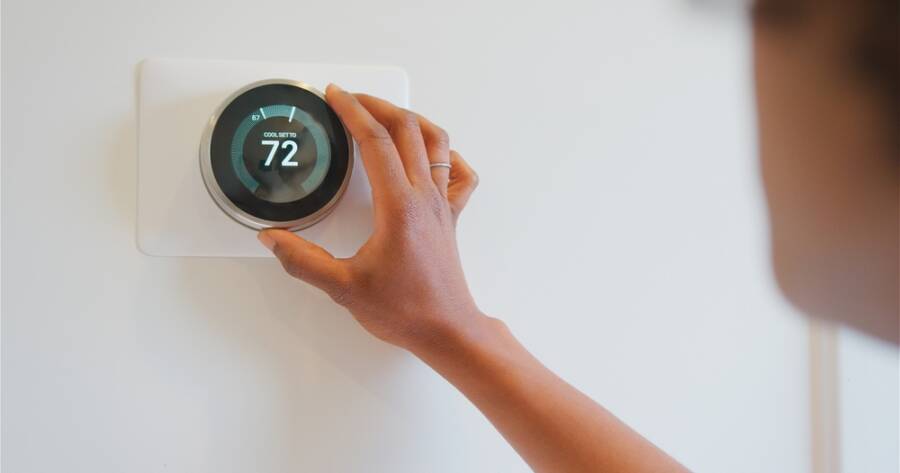Imagine living in a home that anticipates your needs, automates routine tasks, and even saves energy. A smart home, or automated home, has become a reality, thanks to the Internet of Things (IoT). It’s a connected ecosystem where smart devices and appliances are controlled remotely via a hub or platform. Explore the latest in smart home solutions, comparing top brands like IKEA, Google Nest, Honeywell, and Apple.
Smart Home Basics
Smart homes use connected devices and automation technologies to make everyday life more convenient, efficient, and secure. Whether you’re just getting started or looking to upgrade your living space, understanding the foundational elements of a smart home is essential.
At the heart of any smart home setup is a hub or ecosystem—a central platform that connects and manages your devices. Popular ecosystems include Amazon Alexa, Google Home, and Apple HomeKit. These platforms allow voice control, automation routines, and unified app management, ensuring your devices work seamlessly together.
Several device categories form the backbone of most smart home setups:
- Smart Lighting: Includes bulbs, switches, and dimmers you can control remotely or schedule automatically.
- Smart Plugs and Outlets: Turn traditional appliances into smart devices by controlling power with an app or voice command.
- Smart Thermostats: Learn your preferences and optimize heating and cooling to save energy.
- Smart Locks and Doorbells: Add keyless entry, remote monitoring, and video/audio communication at your doorstep.
- Smart Cameras and Security Systems: Provide real-time surveillance and alerts for increased home security.
Most smart devices communicate over Wi-Fi, Bluetooth, or specialized protocols like Zigbee and Z-Wave. Choosing devices that use the same communication standards—or a hub that bridges them—is crucial for smooth integration.
The Benefits of a Smart Home
One of the biggest benefits of smart homes is automation. You can set routines or “scenes” that trigger multiple actions based on schedules, sensor inputs, or location. For example, a “Good Morning” scene might turn on lights, start the coffee maker, and adjust the thermostat—all with one command.
Another long-term benefits is energy savings. By ensuring lights and electronics are turned off automatically or making residents aware of usage, smart homes can significantly reduce energy consumption.
Exploring Different Smart Home Brands
Several brands offer comprehensive smart home solutions:
IKEA Smart
IKEA’s smart home range includes lighting, blinds, and speakers. The IKEA Gateway hub allows these devices to connect and be controlled through the IKEA Home smart app.
Honeywell Smart Home
Honeywell provides a variety of smart home devices, including the T6 WiFi Thermostat and the T6 Pro Smart Thermostat. These programmable thermostats enable users to control their home’s heating and cooling remotely.
Google Nest
Google Nest offers a suite of smart home products, from the Nest Mini speaker to the Nest Hub. The Nest Hub acts as a control center for the smart home, while the Google Home app allows users to customize the home screen and control devices remotely. Google Nest also offers smart lighting solutions, security systems, and thermostats.
Apple HomeKit
Apple’s HomeKit allows users to control compatible devices from an iPhone, iPad, Mac, or Apple Watch. The HomePod Mini acts as a hub for HomeKit devices, which can be controlled using Siri or the Home app. Apple HomeKit is compatible with a wide range of devices, including the Eufy security system, the Govee lighting system, and the Arlo Pro 3 smart camera.
Samsung SmartThings
Samsung’s SmartThings is a robust smart home hub compatible with a wide range of devices, from Philips Hue lights to the Tuya Smart plug. With the SmartThings app, users can control, automate, and monitor their smart devices from anywhere.
The Future of Smart Homes
As technologies advance, smart homes will continue to evolve, becoming increasingly intuitive and efficient.We anticipate innovations in areas such as AI-driven automation, enhanced security features, and even more seamless integration of devices.
The choice of smart home solutions depends on individual needs and preferences. Whether it’s IKEA’s affordable range, Google Nest’s comprehensive ecosystem, Honeywell’s advanced thermostats, or Apple’s seamless integration, the options are plentiful. Welcome to the future of living.
